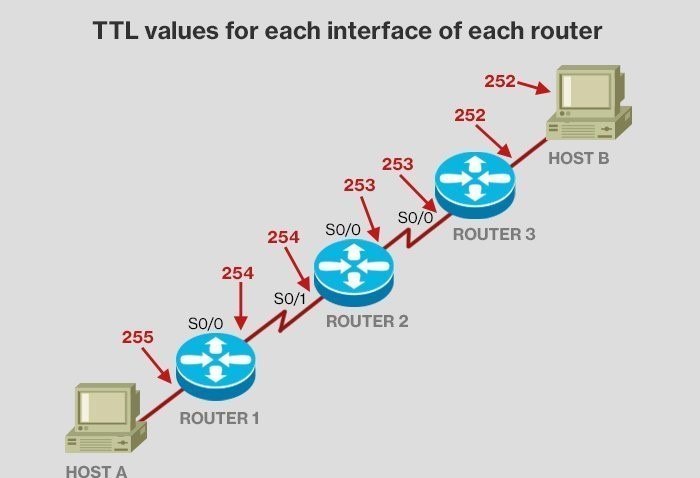
When users visit your website, you want them to receive the most up-to-date information. However, you also need your site to load quickly. Otherwise, you risk a bounce, where the user gives up and leaves your site quickly. Fortunately, you can find a balance by adjusting your website’s Time to Live (TTL). You can use it to improve your site’s loading time and keep the information current. In this guide, we’ll look at what TTL is and how it works. We’ll also examine what it’s used for and how you can choose the right TTL value for your site.
Table of Contents
What is TTL?
It stands for “Time to Live,” and it is a parameter in computer networking that specifies the lifespan or maximum time that data should be allowed to exist in a network or on a computer. It is used in various Internet protocols, such as the Internet Protocol (IP), to prevent data from circulating indefinitely in a network.

It is also used by Content Delivery Networks (CDNs) to cache your data. CDNs are server networks worldwide that host static files, so visitors to your site will receive the closest information to them.
What Are TTL Values?
When you set values for your website, you choose a value in seconds. For example, a TTL value of 600 is the equivalent of 600 seconds or ten minutes.
The minimum available TTL is usually 30, equivalent to 30 seconds. You could theoretically set a TTL as low as one second. However, most sites use a default TTL of 3600 (one hour). The maximum TTL that you can apply is 86,400 (24 hours).
Technically, you can set any TTL value between the minimum and maximum parameters. Later in this article, we’ll discuss how you can choose the best time to live value for your site.
How Does it Work?
Your authoritative domain server holds all the current website records which make up your complete site. When the DNS website records begin their journey and start to hop, they are visiting resolver servers which verify your website name and all the content on there (or packets). There are many servers involved in this process. Time To Live count subtracts 1 from the TTL number each time the records query any server, which can be as high as 255. The records continue to travel the Internet infrastructure, through many servers, to a destination client.

If the count gets to ‘zero,’ this would mean the information has traveled across 255 servers. Unfortunately, if this happens, the requested ‘packet’ is automatically discarded. Or no longer ‘lives.’ This is called TTL expiry and if you were requesting a website you would see a message saying ‘website not found’ in your browser.
An example, expiry message indicating an error and the connection has “timed out” because the domain name track.namecheap.net “took too long to respond”.
What is TTL in DNS?
DNS servers act as a bridge between web servers and domain names. When you type in a domain name like “example.com”, servers cannot interpret this information. They read data in numbers known as IP addresses.
So DNS facilitates the conversion between domain names and IP addresses, and enables users to access websites.
DNS servers acting as a bridge
DNS servers acting as a bridge
To understand the relationship between DNS servers and TTL, we first need to look at the cache. In this context, the cache is a storage for the conversion of your website’s domain name into its IP address.

Every time a user wants to access your website, this conversion needs to happen. If the conversion is stored in the cache, the connection can happen more quickly because there is a DNS record. In fact, the server can pull up the record almost instantaneously.
It determines how long a DNS server will hold onto this DNS record before it requests the information again. It’s one factor that controls DNS propagation, which determines how long a DNS takes to update.
What are the uses of TTL ?
Time to Live is a crucial parameter in networking with several important uses. Here are some of the key uses:
Preventing Routing Loops: The primary purpose is to prevent routing loops in computer networks. By limiting the lifespan of a packet (measured in hops or time), TTL ensures that packets do not circulate indefinitely in a network without reaching their destination.
Efficient Packet Delivery: It helps ensure the efficient delivery of data by preventing packets from endlessly traversing the same routers. This is essential for maintaining the integrity and speed of network communication.
Network Diagnostics: It commonly used in network diagnostics tools like “traceroute” or “tracert.” These tools send packets with increasing TTL values to discover the route to a destination, helping users identify network issues, bottlenecks, or misconfigurations.
Security Measures: It can be used as a security measure to mitigate certain types of attacks, such as Distributed Denial of Service (DDoS) attacks. By limiting the propagation of malicious packets, TTL helps protect network resources.
Load Balancing: Some load balancing algorithms take advantage of TTL to distribute traffic across multiple servers or paths. By adjusting the value, traffic can be directed to different servers, distributing the load and optimizing resource utilization.
Caching Optimization: In content delivery networks (CDNs) and caching systems, it is used to determine the duration for which cached content is considered valid. After the expires, the cached content is refreshed from the origin server.
Quality of Service (QoS) Management: It can be part of Quality of Service strategies where packets are given different TTL values based on their priority. This can be used to prioritize certain types of traffic over others in the network.
Error Reporting: When a packet’s value reaches zero, the router discards the packet and may send an error message (such as ICMP Time Exceeded) back to the source. This error reporting helps in diagnosing network issues.
Network Monitoring: Its often monitored in real-time as part of network management and monitoring systems. It can indicate potential network problems or unusual traffic patterns.
Resource Conservation: By limiting the time or number of hops a packet can take, TTL helps conserve network resources and bandwidth by preventing unnecessary circulation of packets.
In summary, it is a versatile parameter with applications ranging from ensuring efficient packet delivery to aiding in network diagnostics, security, load balancing, and resource management in computer networks.





